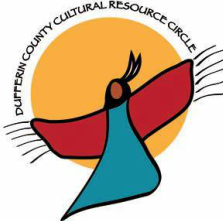Honouring the Original Inhabitants of Dufferin County Area: Offering Neutral Nation Links ...
1. The Canadian Encyclopedia
“The Neutral were an Iroquoian-speaking peoples of the early 17th century lived in the Hamilton-Niagara district of southwestern Ontario and across the Niagara River to west New York state.”
To learn move click here:
http://www.thecanadianencyclopedia.ca/en/article/neutral/
2. First People of Canada
“Samuel de Champlain called them Neutrals, because they were peaceful.”
To learn more click here:
http://firstpeoplesofcanada.com/fp_groups/fp_wf1.html
3. Marianopolis College
“Daillon said that the life of the Neutrals was "not less indecent" than that of the Hurons, and that their customs and manners were very much the same. Like those of the Hurons, the lodges of the Neutrals were formed like arbours or bowers, covered with the bark of trees, 25 to 30 fathoms long and 6 to 8 in breadth, and had a passage running through the middle, 10 or 12 feet wide, from one end to the other. Along the sides was a kind of shelf, 4 ft. from the ground, whereon the occupants lay in summer to avoid the fleas. In winter they lay on mats on the ground near the fire. Such a lodge contained about 12 fires and 24 firesides.”
To learn more click here:
http://faculty.marianopolis.edu/c.belanger/quebechistory/encyclopedia
/NeutralIndians.htm
4. Dickshovel
“Warlike and aggressive, the neutrality of the Neutrals applied only to wars between the Huron and Iroquois. Otherwise, this confederacy was anything but peaceful. For the most part, the Huron considered the Neutrals as hostile (but not enemies), and relations between them were usually tense, even when they visited each other's villages for trade. Men filled most positions of leadership, but some Neutral villages were known to have been ruled by women. In most ways, the Neutrals closely resembled the Huron and Iroquois. Their villages of bark-covered longhouses were fortified and usually built in high, easily-defended locations. Diet depended mostly on agriculture (corn, beans, squash, sunflowers, and tobacco) supplemented by hunting and fishing. Meat and fish constituted a relatively small portion of their diet, and as much as 80% of their calories came from agriculture and the gathering of wild fruits and vegetables. The Iroquian peoples of this region grew at least 15 varieties of corn, 60 types of beans, and six kinds of squash.”
To learn more click here:
http://www.dickshovel.com/neutral.html
5. City of Kitchener
http://www.kitchener.ca/en/livinginkitchener/HNA_archaeological_dig.asp
6. An interesting video Click here
7. Mary Jackes
http://www.arts.uwaterloo.ca/~mkjackes/Valbonne.pdf
“The Neutral were an Iroquoian-speaking peoples of the early 17th century lived in the Hamilton-Niagara district of southwestern Ontario and across the Niagara River to west New York state.”
To learn move click here:
http://www.thecanadianencyclopedia.ca/en/article/neutral/
2. First People of Canada
“Samuel de Champlain called them Neutrals, because they were peaceful.”
To learn more click here:
http://firstpeoplesofcanada.com/fp_groups/fp_wf1.html
3. Marianopolis College
“Daillon said that the life of the Neutrals was "not less indecent" than that of the Hurons, and that their customs and manners were very much the same. Like those of the Hurons, the lodges of the Neutrals were formed like arbours or bowers, covered with the bark of trees, 25 to 30 fathoms long and 6 to 8 in breadth, and had a passage running through the middle, 10 or 12 feet wide, from one end to the other. Along the sides was a kind of shelf, 4 ft. from the ground, whereon the occupants lay in summer to avoid the fleas. In winter they lay on mats on the ground near the fire. Such a lodge contained about 12 fires and 24 firesides.”
To learn more click here:
http://faculty.marianopolis.edu/c.belanger/quebechistory/encyclopedia
/NeutralIndians.htm
4. Dickshovel
“Warlike and aggressive, the neutrality of the Neutrals applied only to wars between the Huron and Iroquois. Otherwise, this confederacy was anything but peaceful. For the most part, the Huron considered the Neutrals as hostile (but not enemies), and relations between them were usually tense, even when they visited each other's villages for trade. Men filled most positions of leadership, but some Neutral villages were known to have been ruled by women. In most ways, the Neutrals closely resembled the Huron and Iroquois. Their villages of bark-covered longhouses were fortified and usually built in high, easily-defended locations. Diet depended mostly on agriculture (corn, beans, squash, sunflowers, and tobacco) supplemented by hunting and fishing. Meat and fish constituted a relatively small portion of their diet, and as much as 80% of their calories came from agriculture and the gathering of wild fruits and vegetables. The Iroquian peoples of this region grew at least 15 varieties of corn, 60 types of beans, and six kinds of squash.”
To learn more click here:
http://www.dickshovel.com/neutral.html
5. City of Kitchener
http://www.kitchener.ca/en/livinginkitchener/HNA_archaeological_dig.asp
6. An interesting video Click here
7. Mary Jackes
http://www.arts.uwaterloo.ca/~mkjackes/Valbonne.pdf

8. Chapter Three of this book
Aboriginal Ontario: Historical Perspectives on the First Nations
by Edward S. Rogers and Donald B. Smith
http://www.amazon.ca/Aboriginal-Ontario-Historical-Perspectives-Nations/dp/155002230X
Aboriginal Ontario: Historical Perspectives on the First Nations
by Edward S. Rogers and Donald B. Smith
http://www.amazon.ca/Aboriginal-Ontario-Historical-Perspectives-Nations/dp/155002230X

